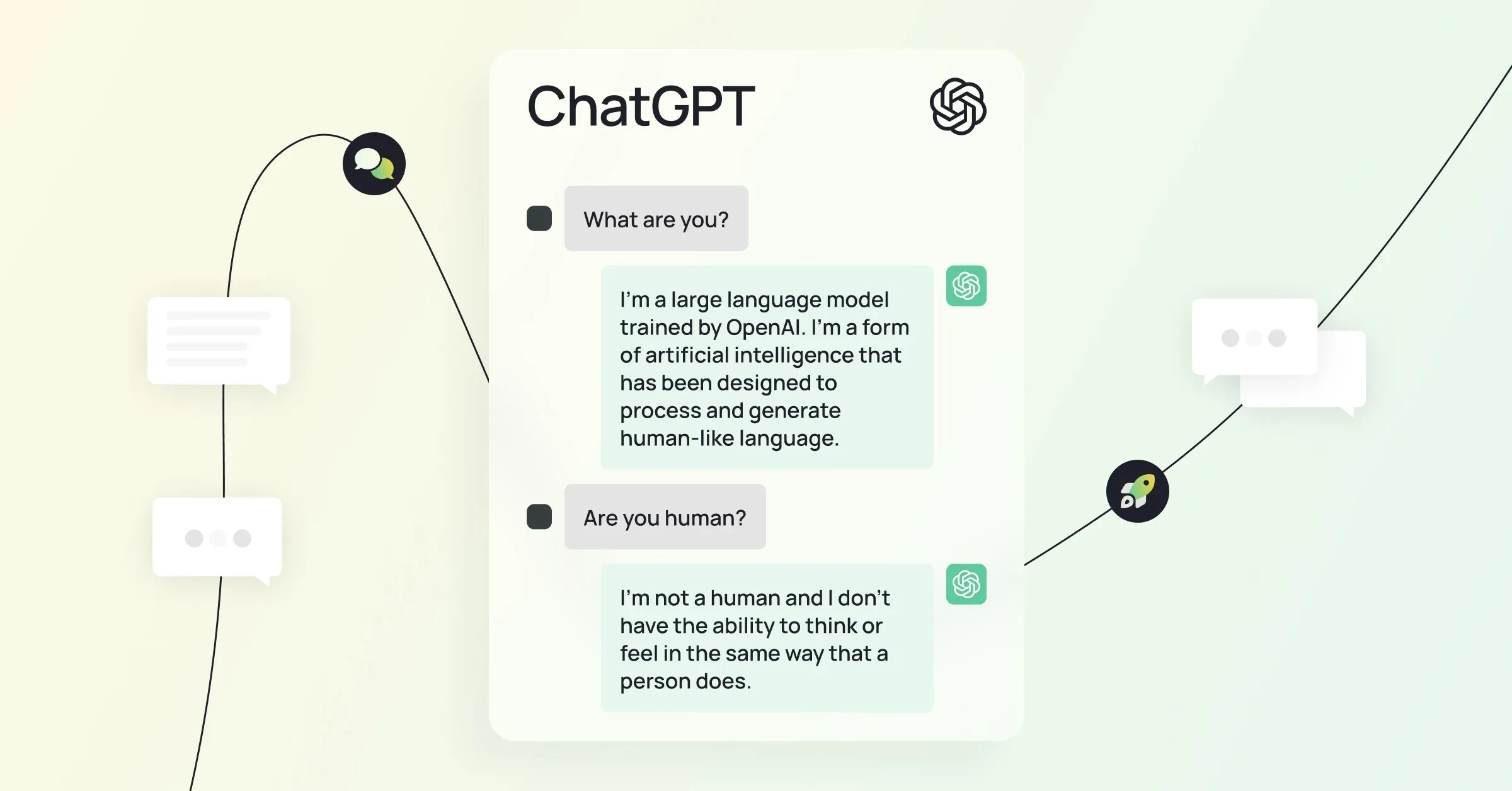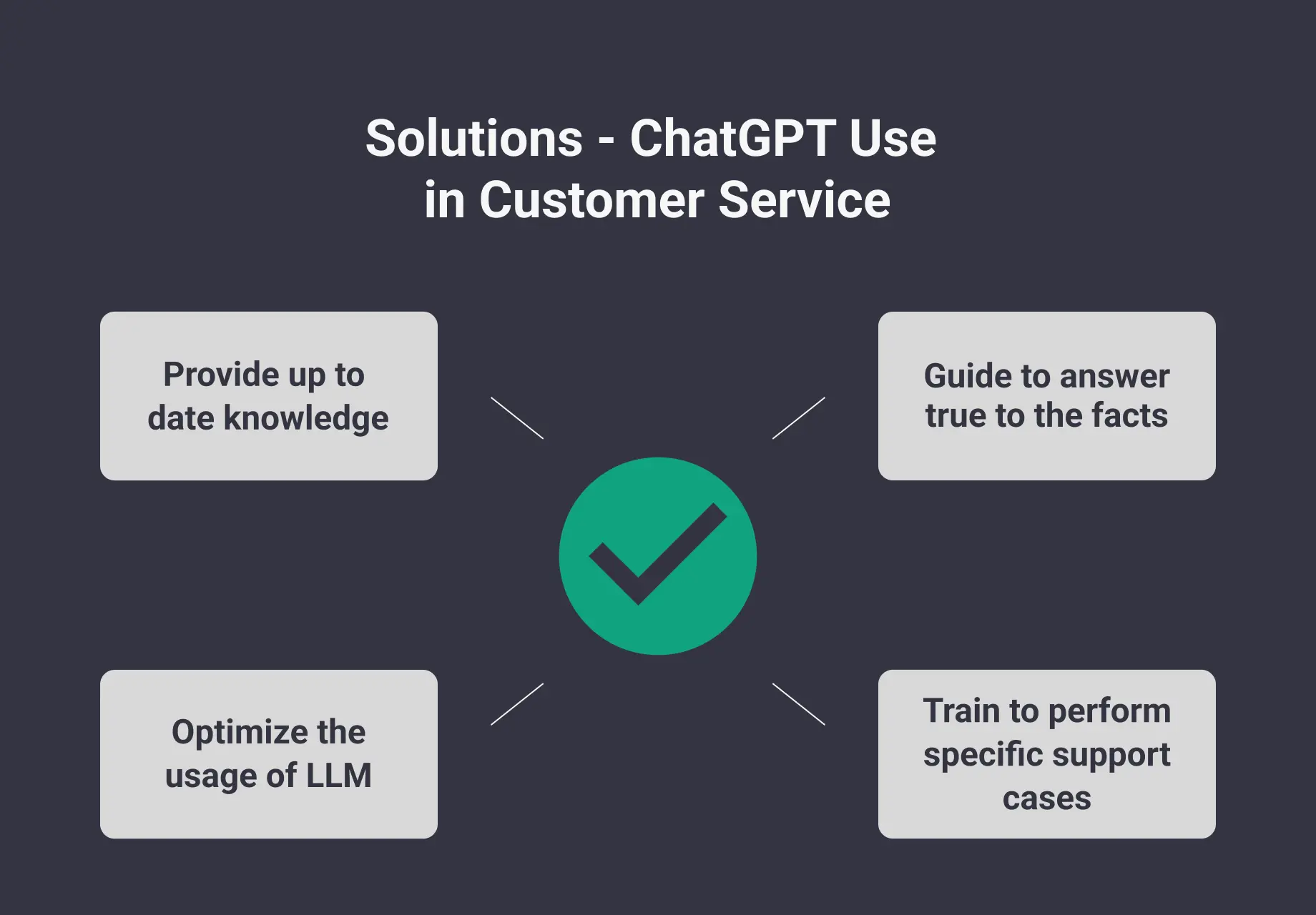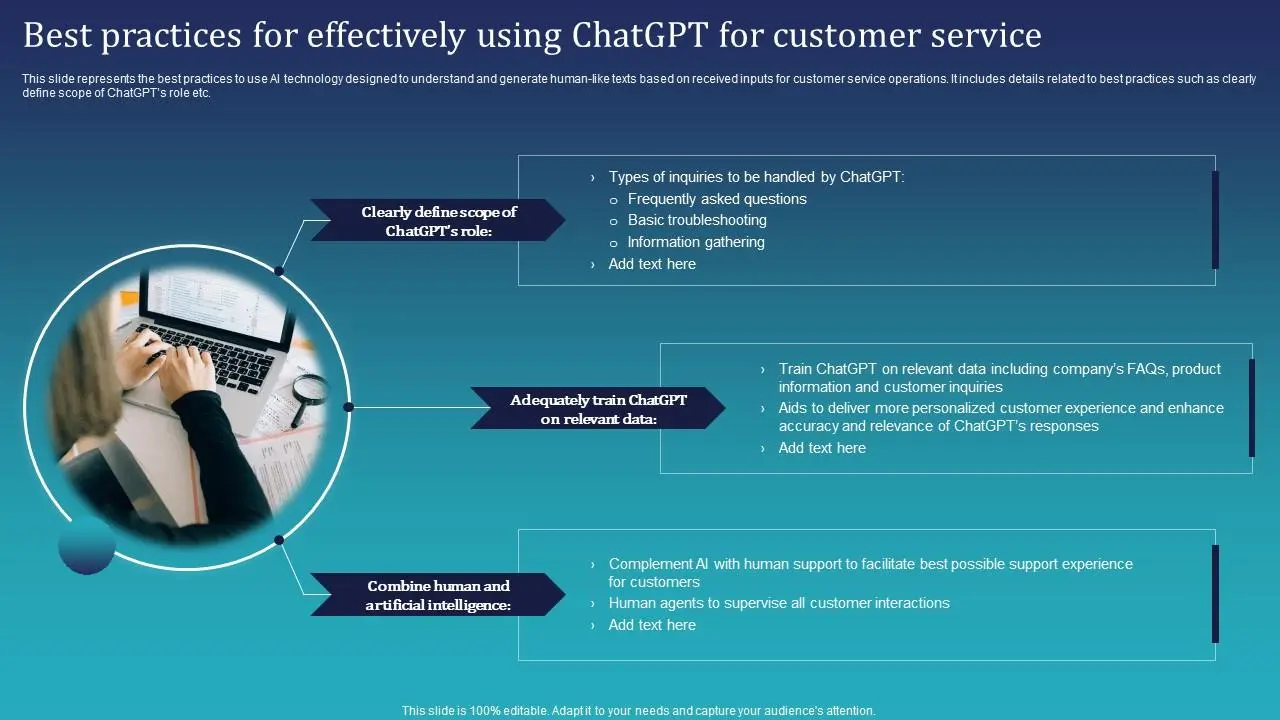"Robots have feelings too." Okay, not really. But imagine if the future of customer service depended on understanding robot emotions. Sounds crazy? Well, it's not about the robots' feelings, it’s about ours.
We’re entering a new era where talking to a machine might just be more satisfying than talking to a human. This isn’t about robots taking over. It’s about bringing in AI, like ChatGPT, to make customer service interactions smoother, faster, and maybe even more personal.
Conversational AI doesn't get tired. It doesn't have bad days. It’s ready to help anytime, with the patience of a saint. This seemingly odd idea of relying more on machines for our service needs actually circles back to a very human desire: the need for quick, efficient, and accurate help.
So, we're about to dive into how ChatGPT and its cousins can switch up the customer service game. It's a bit like teaching robots how to care, minus the emotions. And this guide? It's your map to navigating this new territory, where AI meets customer needs in ways you might not expect.
Understanding ChatGPT
Imagine having a chat with someone who's around 24/7, who never tires, and who always keeps it chill—no matter how many questions you throw at them.
That's kind of what it's like with ChatGPT, only it's way more tech-savvy, because it's an AI—short for Artificial Intelligence.

Now, AI might sound all sci-fi, but it’s just a bunch of algorithms. In simple terms, it's a way for machines, like ChatGPT, to simulate being smart. It's not the scary robots-from-the-future type of AI. It can’t cook breakfast for you—sadly, but it can chat and it does it really well.
ChatGPT is designed by OpenAI, and "GPT" stands for Generative Pre-trained Transformer. That's a mouthful, right? Let's break it down. "Generative" means it can create new stuff—in this case, fresh sentences. "Pre-trained" means it’s already learned a lot of stuff before we even start chatting with it. And "Transformer" is the type of model it uses to figure out what to say next.
But how does it know what to say? Thanks to its training on tons of internet text data. It's not really "read" everything on the internet, but it did learn from a huge volume of online text. And that's what makes it so good at striking up a conversation.
However, remember it doesn't understand in the way humans do, it spots patterns and produces answers accordingly.
So even though it can "talk," it doesn't have beliefs or opinions. It's just moving little digital pieces around to come up with the best response.
Why Use ChatGPT in Customer Service?
Let's do a quick test.
Read this line: "Your query will be addressed within 24-48 hours". Now, how does that make you feel?
Nobody likes to wait, right?
Now imagine hearing: "Great question, let us help you with that right away!". Sounds better, yeah?

That's one punchy reason to use ChatGPT in customer service — it's always ready to help!
It doesn't need coffee breaks, sleeps or weekends off. It handles customer queries right when they pop up, be it 2 AM or during the Super Bowl halftime. That's some serious customer commitment, wouldn't you agree?
And here's more. ChatGPT can chat with lots and lots of customers all at once. Just think of it as that super talented friend who can effortlessly juggle a million tasks at the same time.
For customers, it means no more hearing "Your call is important, please wait in line". And that's a big score for customer satisfaction!
But wait, does it mean every conversation sounds robotic and loses that personal touch? Nope.
Here's the cool part: ChatGPT can learn to personalize interactions based on previous chats. It remembers preferences like their favorite movie genre or how they like their latte, making conversations feel more human and unique.
And let's not forget, ChatGPT is virtually error-free. It won't mix up orders or forget details. It's like that meticulous co-worker who never messes up the paperwork.
Implementing ChatGPT in Your Customer Service Strategy
So now you're thinking, "ChatGPT sounds useful, but how do I bring it into my game plan?" — and that's a really good question. Let's get you sorted.

First up, identify where you want ChatGPT to step in. It's great with routine stuff like answering FAQs or helping with order inquiries. Where your customers would normally have to wait for answers, ChatGPT cuts that wait time to zero. It can even take care of booking appointments or gathering feedback. It's like adding a super quick, reliable player to your team.
Now that you know where ChatGPT fits in, let's talk about getting it to your customers. And that's easier than you might think. ChatGPT can be integrated directly to your website or app.
It also fits well within social media platforms like Facebook or Twitter. Sounds flexible, right? It’s like having a customer help desk that pops up in places your customers already hang out, making life easier for them and for you.
Here's where the fun part starts: personalizing your ChatGPT. That's right. You can train ChatGPT with your own company’s data. Imagine ChatGPT knowing all about your products, services, and even company style. It's like your brand getting its own super-smart voice.
Suggested Reading: ChatGPT Usecases: Taking Your Business to the Next Level
Best Practices for Using ChatGPT in Customer Interactions
You've got ChatGPT on your team now. Awesome! Now, how do you use it to score the most customer service points? Here are some top tips to ace the game.

Tip 1: Be clear with your customers that they're chatting with AI. It's like saying, "Hey, you're about to chat with our helpful AI buddy, ChatGPT". This way customers know what to expect — critical to building trust. No one likes to be left wondering, right?
Tip 2: Treat your ChatGPT like a student who loves learning. The more it chats, the more it learns. Keep an eye on the kind of questions and issues your customers are bringing up. Feed these insights back into shaping how ChatGPT responds. Think of it as a constant tune-up to keep your ChatGPT serving your customers better.
Tip 3: While ChatGPT is super cool, some queries need the 'human touch'. Keep a process to loop in a human agent when needed. It's like having a safety net to catch any complex issues that ChatGPT might find tricky to handle. And your customers will appreciate having real people around when it really matters.
Finally, a big one on the list - and that's privacy. Your customers' chats are their private stuff. Make sure your use of ChatGPT is privacy-compliant and any sensitive information stays safe. Because making your customers feel secure is the ultimate peace of mind.
Overcoming Challenges with ChatGPT
Got some bumps on the road with ChatGPT? No sweat! Let's lay out a few common challenges and how to roll right over them.
First, remember how we said ChatGPT doesn't "understand" as we humans do? Sometimes this can lead to responses that are sort of "off". The trick is to train it with more precise data. It's like teaching a youngster - the better the lessons, the better they grow.
Next, there's the challenge about really complex queries. Like those super technical product questions or deeply concerned customer complaints. While ChatGPT can handle general stuff, these tricky queries might take a human touch. The solution? Have a seamless handoff to your human agents for those high-priority or complex situations. It's like a tag team, where everybody does what they're best at.
Finally, what about an AI going rogue and saying something it shouldn't? This is where you keep a tight leash. Set up strong policies and ethical guidelines to make sure ChatGPT stays within boundaries. And do regular checks to ensure it sticks to the rules.
Future of Customer Service with Conversational AI
Imagine a future where “waiting on hold” is as old-school as fax machines. That's where we're headed with conversational AI, like ChatGPT. It’s going to be a game-changer, making customer service faster, smarter, and way more personal.

First off, AI will understand you better than ever. It’s learning fast, getting smarter about picking up on what you really mean, even if you don’t say it directly. It's like having a chat with a friend who just gets you.
Next, AI will be everywhere you need it. Whether you’re on a website, using an app, or scrolling through social media, help will be just a text away. It's going to be as common as chatting with friends online.
But here’s the cool part: it won’t just be about answering questions. AI will even predict what you need before you ask. It'll give you suggestions, like reminding you to refill a prescription or suggesting the perfect birthday gift for a friend, based on past conversations.
Conclusion
Alright, so there you have it. ChatGPT is your new player in the customer service game. It handles the simple stuff lightning-fast, letting your team focus on the bigger challenges. Just make sure to tell your customers when they’re chatting with AI, and set up ChatGPT with the right training and boundaries.
And if things get tricky, pass the ball to your human agents. Keep that human backup ready for the curveballs. Trust is key, so privacy and transparency can't be afterthoughts – they're part of the core plan.
The future? It’s looking slick with AI chat. Customer service will be on-the-dot, no-hassle, and kind of like talking to a friend who’s there 24/7. Embrace these changes, and you'll keep your customers smiling. Simple as that.
Suggested reading: Why Choose Custom ChatGPT Plugins for Your Website?
Frequently Asked Questions (FAQs)
Can ChatGPT integrate with my current CRM software?
Yes, ChatGPT can often be integrated into various CRM platforms.
This seamless connection allows for a more comprehensive customer service experience, pooling data and insights for more personalized interactions.
Is there a way to measure customer satisfaction from interactions with ChatGPT?
Absolutely. Post-interaction surveys are a great way to gauge satisfaction.
Additionally, analyzing conversation logs for resolution rate and response time offers insight into performance.
How does ChatGPT keep up with changes in my business or product offerings?
Regular updates to the training data, including new product information and policies, keep ChatGPT informed.
Consistent monitoring and adjustments ensure it stays up to date.
What languages can ChatGPT support for customer service?
ChatGPT supports multiple languages, making it a versatile option for global customer service.
However, its proficiency depends on the quality and quantity of the language data it has been trained on.


